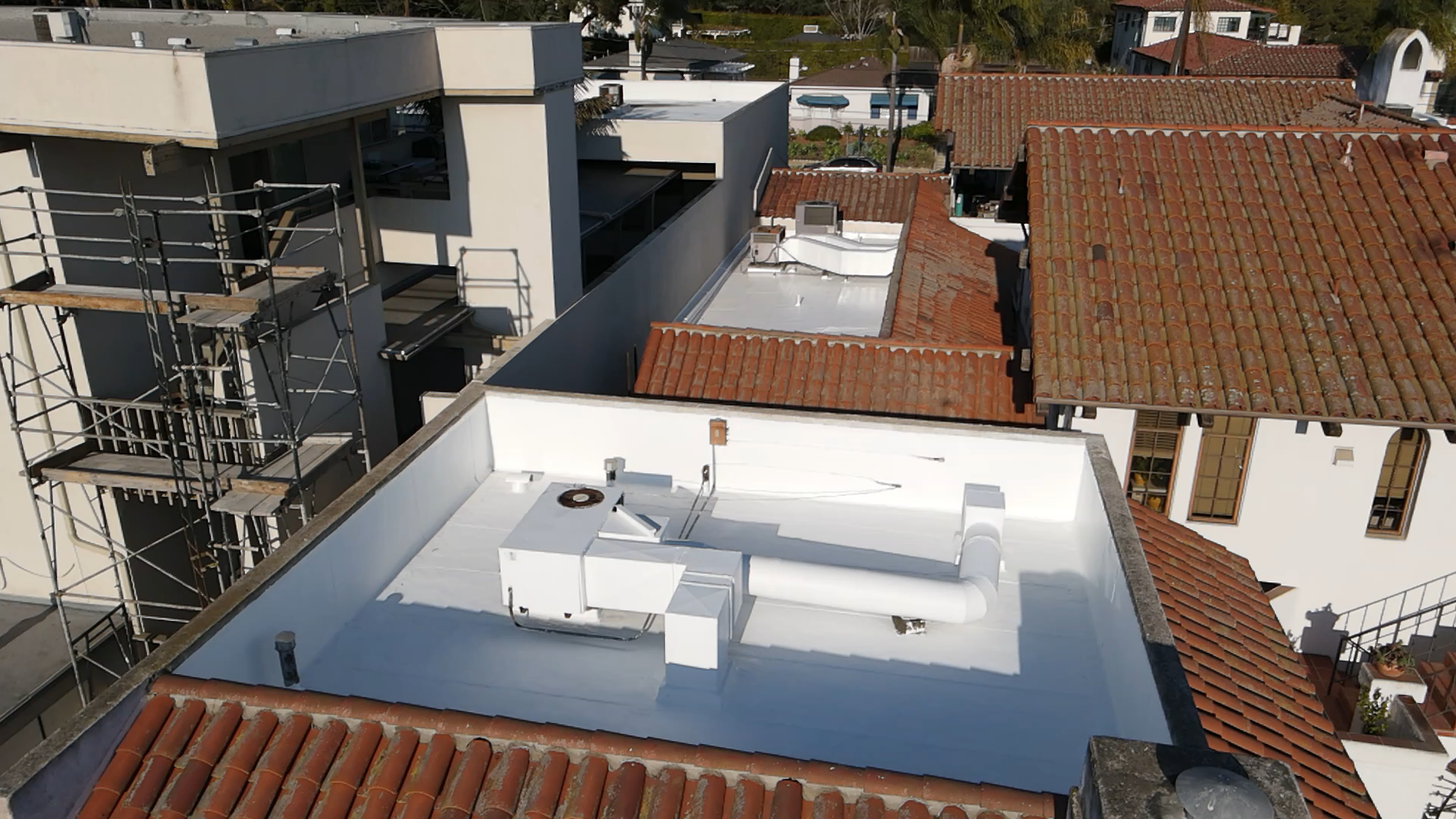Do You Need A Lightning Rod With A Metal Roof?
Do You Need A Lightning Rod With A Metal Roof - Quick Summary
Wondering if metal roofs attract lightning or make your home more vulnerable? They don’t. This article breaks down common myths, explains why metal roofs are actually one of the safer choices during storms, and when (if ever) you might need a lightning rod. You’ll also learn that Santa Barbara is one of the lowest lightning-risk areas in the U.S., meaning the odds of a strike are already low—metal roof or not. I found no mention of air terminal (aka lightning rod) requirements for metal roofs in the Santa Barbara Building Code.
Do Metal Roofs Attract Lightning?
No. Lightning does not “seek out” metal roofs, nor does metal increase the likelihood of a strike.
Instead, lightning is influenced by factors like:
Height of the structure – Taller buildings are more likely targets
Elevation – Homes on hills or ridges are more exposed
Surface area – Larger buildings have a larger strike footprint
Nearby objects – If a house is next to taller trees or structures, it’s less likely to be hit
Geography – Lightning is far more common in places like Florida and the Midwest than in coastal California
Source: Metal Construction Association Best Practices Guide (PDF)
What the Experts Say
The Metal Construction Association (MCA) has this to say about metal roofs:
“A metal roof is no more or less likely to be struck by lightning than any other type of roofing material.” (Source: Metal Construction Association: Lightning Strikes and Metal Roofing.)
In fact, non-metal roofs (like asphalt or wood) may carry more risk if lightning does strike — because they can catch fire more easily.
The Unsung Safety Benefits of Metal Roofs
Non-Combustible
Metal won’t ignite like shingles or shakes. Many metal roofing products have a Class A fire resistance rating from UL 790, the highest rating available. That's the rating our metal roofs have (We use Taylor Metal).
Conductive (in a good way)
If lightning hits, a grounded metal roof disperses the energy over a wide area, reducing the chance of a “hot spot” that could cause fire or structural damage.
Durable
Metal roofs are strong and less likely to be penetrated or structurally compromised by a lightning strike compared to more fragile materials.
Do You Need a Lightning Rod with a Metal Roof?
For many homes, the answer is: probably not.
A metal roof:
Is already conductive
Is non-combustible
But there are exceptions. You may want to consider a lightning protection system (LPS) if:
Your house is the tallest structure around
You live in an area with frequent and severe thunderstorms
Your insurance provider requires it
You have a metal roof but non-metal walls, so your home lacks full Faraday cage protection
Your local building code requires it.
If you do choose an LPS, make sure to go with a reputable company that won't void your roof warranty when they set up the system. Sometimes drilling into roofing can void a warranty. For example, Taylor Metal’s 20-year weathertight warranty states that roof penetrations not shown on approved shop drawings—such as those caused by equipment or accessories—can void coverage (Taylor Metal Warranty PDF). While this document is just a sample, it reflects the kind of limitations you’ll often find in standing seam roof warranties.
What Is a Lightning Protection System?
A Lightning Protection System (LPS) is a coordinated network designed to safely intercept, conduct, and dissipate the massive electrical energy of a lightning strike before it can cause harm to your home or occupants.
A full system typically includes:
Air Terminals (Lightning Rods): Installed at the highest points of a building to intercept lightning before it strikes a less controlled surface.
Conductors: Heavy-duty copper or aluminum cables that carry the electrical charge from the air terminals toward the ground.
Grounding Electrodes: These are buried in the earth, and the rods safely disperse the electrical charge into the ground.
Bonding: Electrically ties together all major metallic systems in the building (like pipes, HVAC, and framing) to equalize voltage and prevent dangerous side currents.
Surge Protection Devices (SPDs): Installed at main electrical panels to protect your electronics and appliances from voltage spikes.
A lightning rod does not attract lightning — it provides a safe, direct path to ground if lightning happens to strike. Its job is to control the strike, not invite it.
Importantly, this is not a DIY job. A professionally designed and installed system is critical for both effectiveness and safety. There are many factors to consider, including building layout, height, regional risk, and roofing material. Air terminals need to be mounted in a way that doesn't damage the roof or void the roofing warranty — especially for standing seam metal roofs.
Always choose an experienced, certified installer who follows established safety standards like NFPA 780, UL 96A, and guidelines from the Lightning Protection Institute.
Source: MCA – Best Practices in Lightning Protection and Metal Construction (PDF)
Santa Barbara’s Lightning Risk
Santa Barbara is located in a low lightning-risk region.
According to Vaisala’s National Lightning Detection Network (NLDN), California experiences some of the lowest lightning strike densities in the U.S.
That means the need for a lightning protection system is lower here than in regions like the Southeast or Midwest.
Source: Vaisala NLDN Lightning Dataset Overview
Still, if your home sits on a ridge or is unusually exposed, it might still be worth a consultation with a pro.
Digression: How Powerful Is Lightning?
Let’s step back for a moment and understand just how much energy a lightning strike actually contains.
The average lightning bolt carries between 1 and 10 billion joules of energy (Weather.gov). That’s enough to:
Power a 1,000-watt toaster continuously for 3–4 months
Reach temperatures over five times hotter than the surface of the sun — lightning can hit 30,000 Kelvin (53,540°F), while the sun’s surface is around 5,778 K (9,940°F) (NOAA)
Of course, the real challenge isn’t how much energy lightning has — it’s how to safely redirect that energy so it doesn’t cause injury or damage.
That’s where lightning protection systems (LPS) come in: providing a safe, engineered path for lightning to follow — away from your home, roof, and loved ones.
Smart Ways to Protect Your Home
Even if an LPS isn’t necessary, you can still take action to increase safety:
Make sure your metal roof is properly grounded
Install whole-home surge protection at your electrical panel
Use plug-in surge protectors for expensive electronics
Get annual roof inspections to check connections and materials
Trim tall trees near your home that might become strike targets
Final Word
Metal roofs don’t attract lightning — that’s a myth.
In fact, they’re one of the safest roofing choices during a storm: non-combustible, durable, and capable of safely dispersing electrical energy if struck. Metal roofs also last from 40 to 60 years! They also provide more protection against the elements than shingle roofs: see our comparison between shingle and metal roofs. Cost-wise, they are more expensive than everyday asphalt shingle roofing, but they make up for it by lasting longer.
If you're in Santa Barbara, you're already in a low-risk lightning zone, meaning most homes won’t require a lightning rod at all.
Still have questions?
Reach out to Legacy Roofing of Santa Barbara — we’re happy to answer your questions and help you make the most informed decision about metal roofing in Santa Barbara, CA.
author bio
Jeremy Burrey, owner of Legacy Home Roofing, is a roofing expert with over 20 years of hands-on experience. He specializes in metal roofing, valued for its durability, fire resistance, and long lifespan. As a full-service roofer and second-generation craftsman, he carries on his family's tradition of quality construction in Santa Barbara, bringing expertise in everything from elegant slate roofing to modern metal systems. Jeremy personally oversees each job to ensure top-notch results, regardless of the material.








